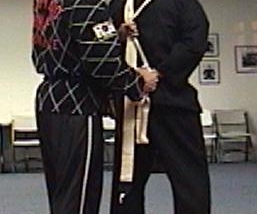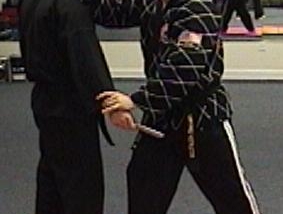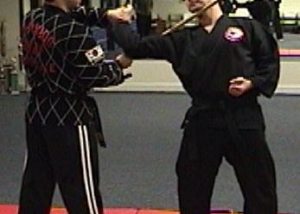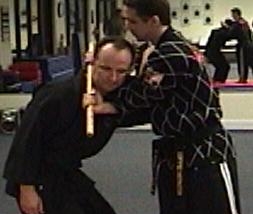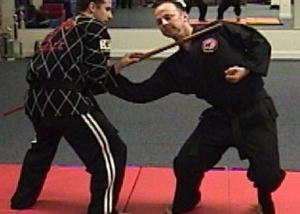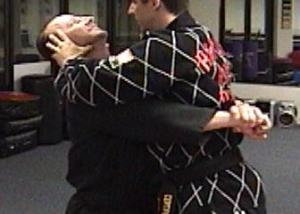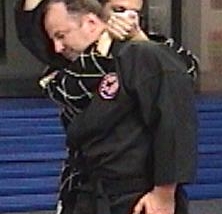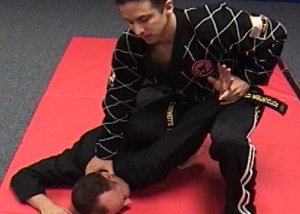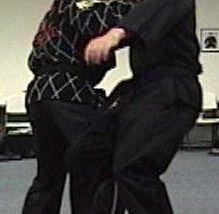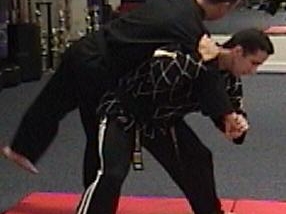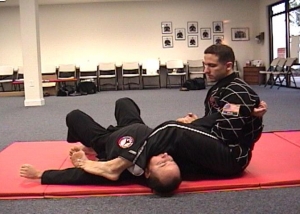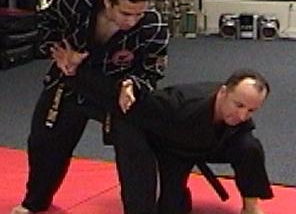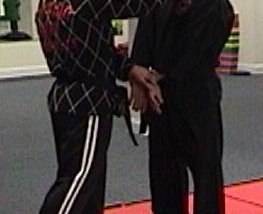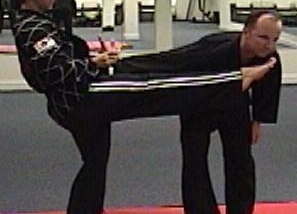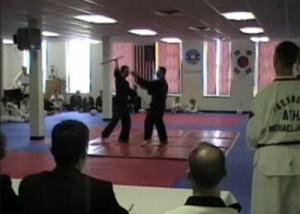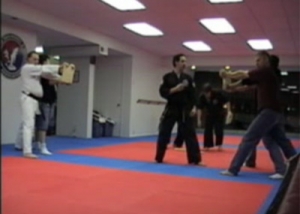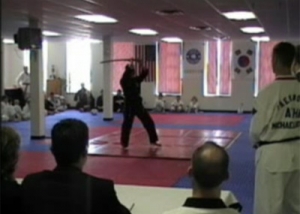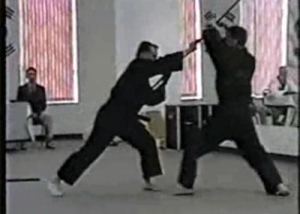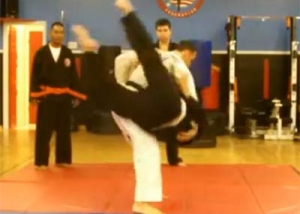Hapkido is one of the most realistic forms of self defense known in martial arts. Our instructors will not only go over nearly every situation you may encounter, but we will teach you to understand the core of all techniques that will lead you to defend yourself in an impromptu way without having to learn every technique hapkido has to offer. Hapkido consists of nearly all aspects of martial arts, such as joint locks, kicking/striking, and pressure points, with the focal point being on joint lock manipulation.
What you will Learn: The colored belt curriculum consists of kicks, strikes, blocking, Ki: describes internal energy, spirit, strength, or power tumbling (how to limit damage of falling or being thrown), joint locks, pressure points, various styles of sparring, and board breaking. At the black belt level students will begin to learn the use of many practical weapons, such as the short stick, and walking cane. Black belts will also continue learning advanced techniques building on what was learned in the colored belt material, as well as various other aspects of hapkido.
Hapkido is considered a “soft” style of Martial Art, as opposed to “hard” styles that practice the use of force against force, making the outcome a simple matter of size and strength. Hapkido techniques do not require that the practitioner be larger or stronger than the opponent.
Hapkido provides complete physical conditioning which improves balance, posture, flexibility, timing, quickness, muscle tone, joint strength and most importantly, confidence through physical and mental discipline.
Hapkido combines joint locks, pressure points, throws, falls, kicks, ground control tactics and strikes for practical self-defense. Hapkido is more of a soft style than a hard style, but elements of each are included. Hapkido emphasizes principles of circular motion, non-resistive movements and water.
Basic Hapkido Principles
Curcular Motion: Most of the joints in the body move in some type of circular motion. It is this circular movement which the Hapkido practitioner uses to his or her advantage. Straight, jerky movements are extremely difficult to employ when trying to redirect power. However, by employing the principle of circular motion one can change the momentum of an opponent from a frontal motion to a lateral motion.
Non-resistance: Non-resistance is very characteristic of Hapkido and one of the major areas where the art differs from its more traditional hard style martial arts cousins. Moving with an attack and redirecting the attack or using the attackers momentum against them is the principle of non-resistance
Water Principle: The water principle is best described by the direct strength of flowing water. As water flows in a stream it surrounds and eventually wears down any obstruction in its path. Similarly, the Hapkido student flows in and about their opponent, looking for the weakest point.
Moo Hahn Hahn Hapkido:
How is Modern Hapkido different from Traditional Hapkido? While we deeply respect the traditions of all martial arts, we also know that times and cultures change and we must adapt. Our number one goal in Modern Hapkido is self defense. I keep my adult Modern Hapkido classes fairly informal as I do not demand the students to bow and say “yes sir” after every command like I do with my youth and Taekwondo students.
Furthermore, we have removed a considerable amount of material out of the curriculum from Traditional Hapkido. Traditional Hapkido is known to have over 6000 techniques! Many of these techniques are simply repetitive while others are impractical. We’ve reduced the curriculum considerably to make the system as simple and practical as possible.
Tradition is great, but we feel it sometimes just creates boundaries which can inhibit our learning. This open minded, ever evolving, attempted simplicity is what we call “Unlimited Hapkido” or “Moo Hahn Hahn Hapkido”!

